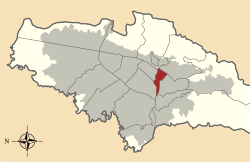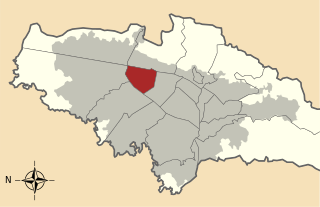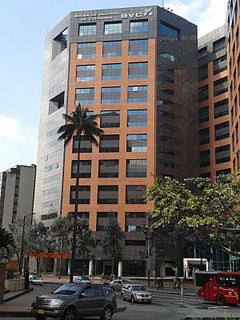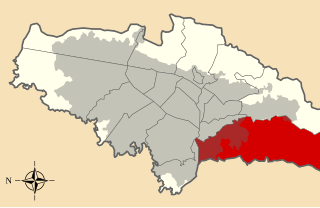| Antonio Nariño | |
|---|---|
| Locality of Bogotá | |
San Antonio de Padua Church | |
 Location of the locality in the city of Bogotá | |
 Location of the locality in the Capital District of Bogotá | |
| Coordinates: 4°35′03″N74°06′47″W / 4.58417°N 74.11306°W Coordinates: 4°35′03″N74°06′47″W / 4.58417°N 74.11306°W | |
| Country | Colombia |
| City | Bogotá D.C. |
| Neighbourhoods | Restrepo (Bogotá) |
| Area | |
| • Total | 4.88 km2 (1.88 sq mi) |
| Elevation | 2,600 m (8,500 ft) |
| Population (2007) [1] | |
| • Total | 119,565 |
| • Density | 25,000/km2 (63,000/sq mi) |
| Time zone | Colombia Standard Time (UTC-5) |
| Website | Official website |
Antonio Nariño is the 15th locality of Bogotá, capital of Colombia. It is located in the south of the city. This district is mostly inhabited by lower middle and working class residents. The locality is named after an early Colombian leader, Antonio Nariño, who is often referred to as the precursor to the presidency.

Bogotá, officially Bogotá, Distrito Capital, abbreviated Bogotá, D.C., and formerly known as Santafé/Santa Fé de Bogotá between 1991 and 2000, is the capital and largest city of Colombia, administered as the Capital District, although often erroneously thought of as part of Cundinamarca. Bogotá is a territorial entity of the first order, with the same administrative status as the departments of Colombia. It is the political, economic, administrative, industrial, artistic, cultural, and sports center of the country.

Colombia, officially the Republic of Colombia, is a sovereign state largely situated in the northwest of South America, with territories in Central America. Colombia shares a border to the northwest with Panama, to the east with Venezuela and Brazil and to the south with Ecuador and Peru. It shares its maritime limits with Costa Rica, Nicaragua, Honduras, Jamaica, Haiti, and the Dominican Republic. Colombia is a unitary, constitutional republic comprising thirty-two departments, with the capital in Bogota.

Antonio Amador José de Nariño Bernardo del Casal was a Colombian ideological precursor of the independence movement in New Granada as well as one of its early political and military leaders.
























